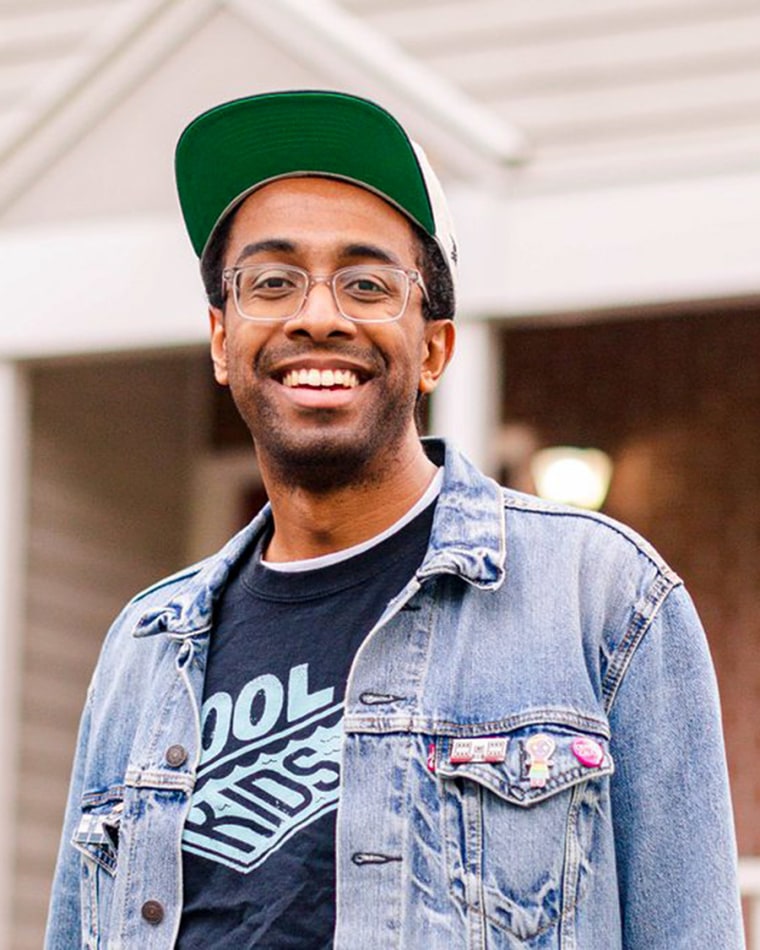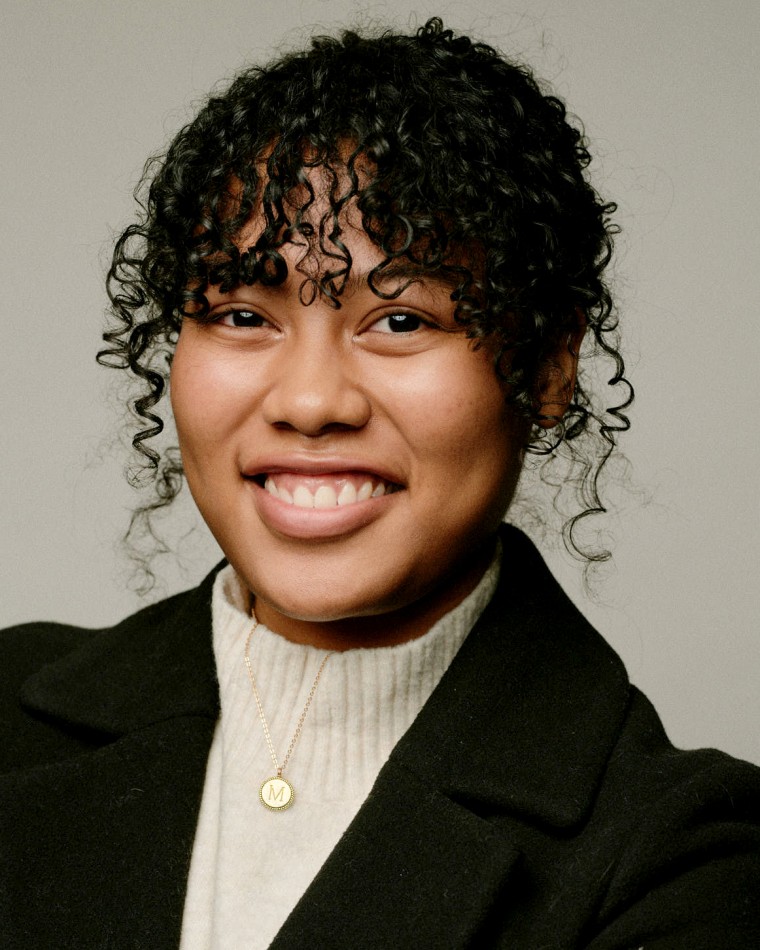Atlanta Spa Shooting

This picture above is of Robert Peterson sitting for a portrait outside of his home of his late mother, Yong Ae Yue, in Norcross, GA.
A shooting spree happened on March 16, 2021, at three spas/massage parlors in Atlanta, Georgia, United States. Among the six Asian American victims, Yong Ae Yue was a Korean American woman with biracial children. Before the tragedy, Robert Peterson (one of Yue’s children) participated in the Black Lives Matter demonstrations to protest racial injustice and demand change. Amid the increasing Anti-Asian attacks (including his mother’s passing) across the country, Peterson has been working on reuniting Black and Asian communities in a shared fight against hate (racism). He volunteers with civic engagement groups, representing both communities, and speaks to the groups that invite him and wants to do more, like starting a foundation. Peterson wants to use the aftermath of the shooting to educate both Black and Asian Americans about the two communities’ shared objectives and build a bridge between them.
“She knew who we were, and our identity, and the duality of our identities. She loved both sides of that for us,” he said of his mother. “And to see us embraced by these different communities, for her, she would have loved that” – Robert Peterson
About the Family
Yue was born and raised in South Korea. While living there, she met an American soldier. From there, she married him and moved to Georgia, U.S. The pair divorced around 1984 but had two sons, Elliott and Robert. It wasn’t an easy choice for her, but she let her ex-husband have full custody of their sons, and they lived with him. Based on the sons’ appearance, they would be perceived as Black. Yue thought it would be a good idea for them to live with other people that look like them and understand their experiences living in America as Black men. Yue stayed in Texas until her children grew older and moved back to Georgia.
 Yong Ae Yue holding her son Elliott in 1979, while they were living in South Korea.
Yong Ae Yue holding her son Elliott in 1979, while they were living in South Korea.
Yue always made sure her sons would always be exposed to Korean culture. Robert remembered how much his mother loved to cook Korean food for her family. During her visit at his freshmen dormitory at Morehouse College, a historically Black all-male school in Atlanta, “she brought so much kimchi that the hallway smelled like it after she left, he recalled.”
AAPI Civil Rights Activism
The Atlanta spa killings represented a galvanizing moment in AAPI’s civil rights activism. This movement stemmed from America’s history of xenophobia, such as the Chinese Exclusion Act of 1882. There were also key movements when Black and AAPI activists joined forces. For example, Frederick Douglass denounced the Chinese Exclusion Act of 1869, and the two communities worked together to fight for voting and immigrant rights during the civil rights movements (the 1950s-1960s). There were bumps along the road, such as racial tensions and racist stereotypes. During the 1992 LA riots, a 15-year-old Black girl was killed by a Korean grocer. Civil rights leaders and activists from both communities are working on challenging these narratives that shape racist stereotypes. After the Atlanta shootings, Stop AAPI Hate activists marched along with Black Lives Matter activists in demonstrations across the country to create solidarity between both communities to harness each other’s pain (racism) and promote beneficial change for the future.
“Maybe you don’t relate to the Asian community . . .but maybe you feel connected to me as a Black man, or as a Black person, or a biracial person,” Robert said. “. . . That’s what it’s about: seeing ourselves reflected in one another.”
Experiences of Blasians
From the nationwide protests against police brutality, rising attacks against Asian Americans, and the election of Kamala Harris as the Democratic Vice President of the US, the race relations within Asian and Black communities have shifted into focus and affect the lives of blasian people. A blasian is a term to describe a person who is Black and Asian. During the summer of 2020, Black Lives Matter, and #StopAsianHate gained attention by challenging the model minority myth, colonialism, and colorism to explain how the histories of both the Black and Asian communities shape how people in society interact with each other today. Now the question is, “What does it mean to be both?” Some mixed-Asian Americans discuss their identities, communities, and how the events in 2020 affect their lives:
 Dan Reed, Black and Indo-Guyanese, discusses fighting categorization.
Dan Reed, Black and Indo-Guyanese, discusses fighting categorization.
In the fourth grade, his teacher passed out a fill-in-the-bubble test that gave students the option to indicate their race. Reed grew up immersed in Caribbean culture and filled in the bubbles for both “Black” and “Asian.” A couple of days later, he received his paperback and noticed his teacher erased the bubble for Asians. “And I don’t know if she realized how damaging that can be.” He felt like people has tried to put his racial identity in a box for his entire life. He grew up with his Indo-Guyanese mother and was more familiar with Indian Caribbean culture than Black culture. However, as he got older, he realized the implications of his appearance as a Black man and the exclusion that comes with it. “As I got older, and I started to understand and appreciate more of my Indian heritage, I discovered that other Indian people who are from India weren’t always accepting of me,” he said. “Because I look Black, I have nappy hair.” The year 2020 caused Reed to become more aware of how people see him.

Mikako Murphy, Japanese and Black, discusses invasive questions
Murphy is tired of hearing these questions: Why do you look like that? Why does your mom look like that? Are you adopted? Since she was a child, Murphy spent time with both sides of her family, in Boston and Japan. But she is used to standing out compared to others in a room. “I don’t understand why other people think it is in their right to ask another person such personal questions.” During her sophomore year at Barnard College, she began interacting with other Black-Asian people. It was an experience she always “needed and wanted in my life.” The Black Lives Matter and #StopAsianHate demonstrations allowed her to think more about her racial identity. She feels responsibility to continue building connections among Black, Asian, and multiracial communities.
Even though some people can’t relate to being Black, Asian, or biracial, the main aim is to understand and connect to other people’s experiences/stories with racial injustice to help create a better future in America.
Sources
Lee, Michelle Ye Hee. “Atlanta Shooting Victim’s Biracial Sons Seek to Unite Black, Asian Communities in Shared Fight against Hate.” The Washington Post, WP Company, 11 Aug. 2021, https://www.washingtonpost.com/national/atlanta-spa-shootings-yong-ae-yue/2021/08/08/9b8460b0-d1fb-11eb-9f29-e9e6c9e843c6_story.html.
Venkatraman, Sakshi, and P.R. Lockhart. “On Being Black and Asian American in 2020.” NBCNews.com, NBCUniversal News Group, 18 Oct. 2020, https://www.nbcnews.com/news/asian-america/not-enough-or-double-prejudice-being-black-asian-american-2020-n1243353.